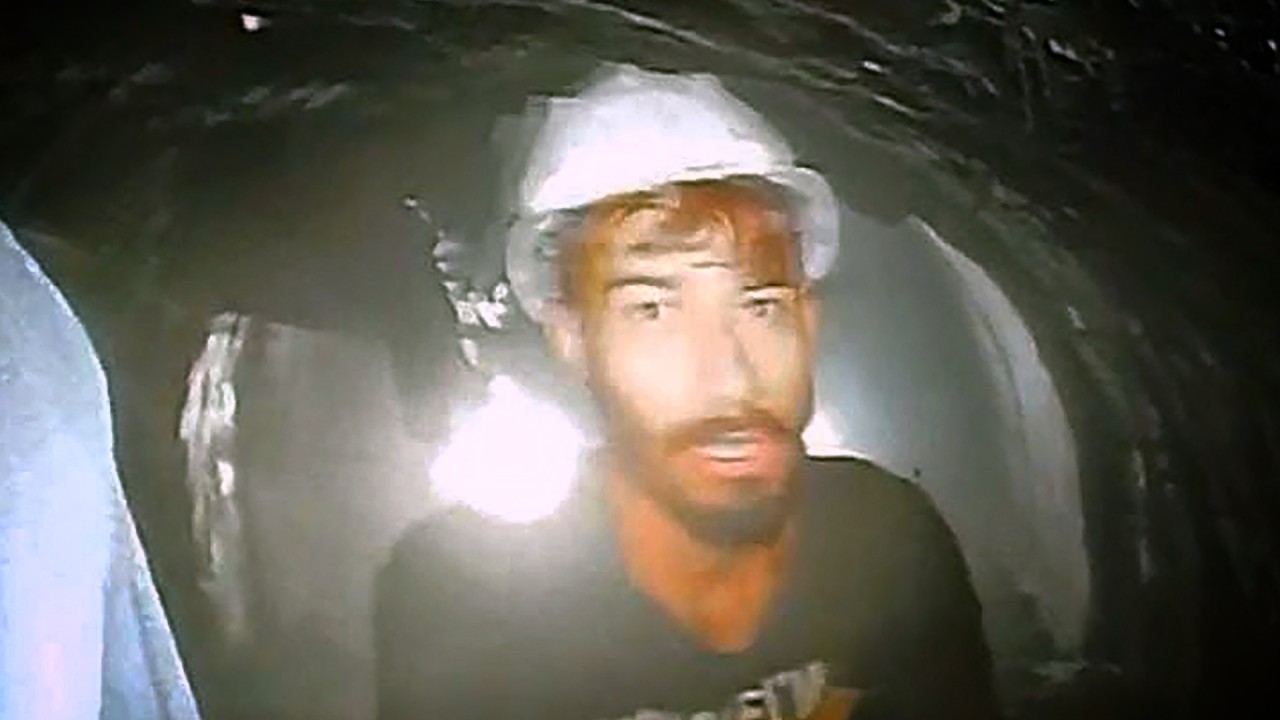Indian army digs by hand to free 41 workers trapped in tunnel for two weeks
Indian military engineers were preparing to dig by hand on Monday to reach 41 workers trapped in a collapsed road tunnel for 16 days, a rescue operation hit by repeated setbacks.
Soldiers plan to use a so-called “rathole mining” technique, digging by hand to clear the rocks and rubble over the remaining nine metres (29 feet), with temperatures plummeting in the remote mountain location in the Himalayan state of Uttarakhand.
Last week, engineers working to drive a metal pipe horizontally through 57 metres (187 feet) of rock and concrete ran into metal girders and construction vehicles buried in the earth, snapping a giant earth-boring augur machine.
“The broken parts of the auger [drilling] machine stuck inside the tunnel have been removed”, senior local civil servant Abhishek Ruhela said on Monday, after a specialised superheated plasma cutter was brought in to clear the metal.
Indian Army engineering battalion personnel, along with other rescue officers, are preparing to do rathole mining
“Preparations are being made to start manual drilling work,” he added. “Indian Army engineering battalion personnel, along with other rescue officers, are preparing to do rathole mining”.
Engineers in the bitterly cold conditions will use manual drills to clear the route, a tough task in the narrow pipe, just wide enough for a man to crawl through.
In a separate effort, vertical drilling has reached more than a quarter of the 89 metres down to the men, a risky route in an area that has already suffered a collapse.
A drilling machine was brought up to the forested hill above the tunnel on a specially-constructed track.

“Vertical drilling is going on at a fast pace,” with teams having reached 19 metres (63 feet) by late Sunday, said Mahmood Ahmed, a top official in the national roads ministry.
Work is ongoing at “full speed but with caution”, he added.
Digging, blasting and drilling have also begun from the far side of the road tunnel, a much longer third route estimated to be around 480 metres.
The 41 construction workers have been trapped in the Silkyara road tunnel since November 12.
Efforts have been painfully slow, complicated by falling debris and repeated breakdowns of drilling machines.
Hopes that the team was on the verge of a breakthrough on Wednesday were dashed, with a government statement warning of the “challenging Himalayan terrain”.
For the distraught relatives of the trapped men, it has been an ordeal without an imminent end in sight.
But Uttarakhand chief minister Pushkar Singh Dhami vowed on Monday that all the men would be rescued.
“Do not worry, all the labourers will be taken out safely”, he said on X, formerly Twitter.
The workers were seen alive for the first time on Tuesday, peering into the lens of an endoscopic camera sent by rescuers down a thin pipe through which air, food, water and electricity are being delivered.
Though trapped, they have plenty of space in the tunnel, with the area inside 8.5 metres high and stretching about two kilometres in length.
‘Worried’: India tunnel rescue ‘more complex’ amid switch to manual drilling
‘Worried’: India tunnel rescue ‘more complex’ amid switch to manual drilling
Most of the trapped workers are migrant labourers from across the country. Many of their families have travelled to the location, where they have camped out for days to get updates on the rescue effort and in hopes of seeing their relatives soon.
Authorities have supplied the trapped workers with hot meals through a six-inch (15-centimeter) pipe after days of surviving only on dry food sent through a narrower pipe. Oxygen is also being supplied through a separate pipe, and more than a dozen doctors, including psychiatrists, have been at the site monitoring their health.
The tunnel the workers were building was designed as part of the Chardham all-weather road, which will connect various Hindu pilgrimage sites. Some experts say the project, a flagship initiative of the federal government, will exacerbate fragile conditions in the upper Himalayas, where several towns are built atop landslide debris.
Large numbers of pilgrims and tourists visit Uttarakhand’s many Hindu temples, with the number increasing over the years because of the continued construction of buildings and roadways.


